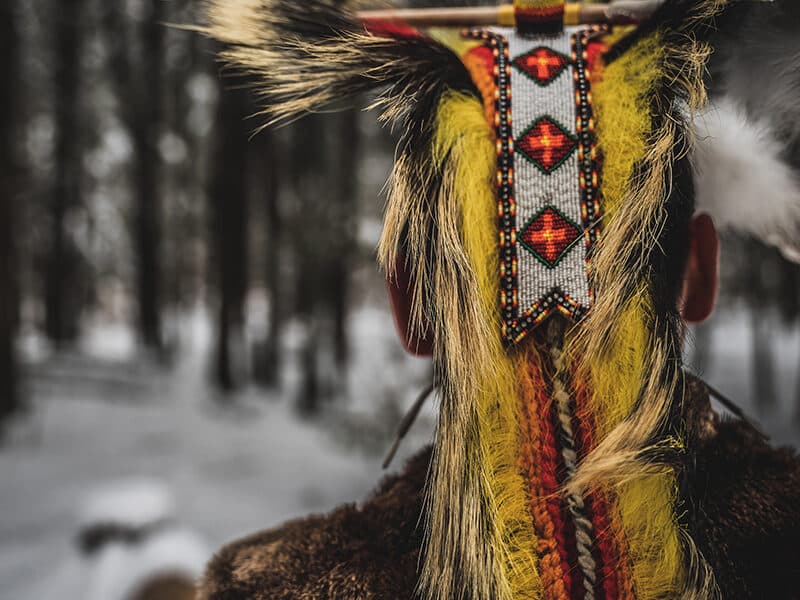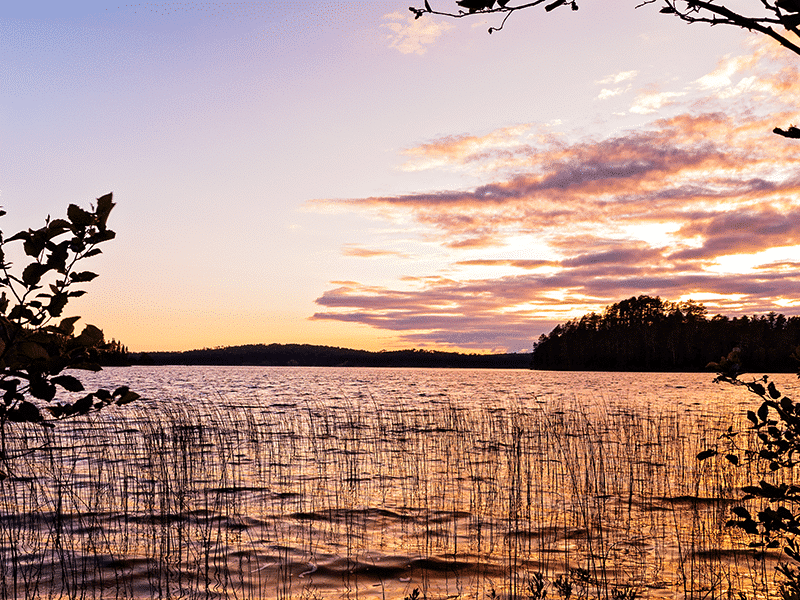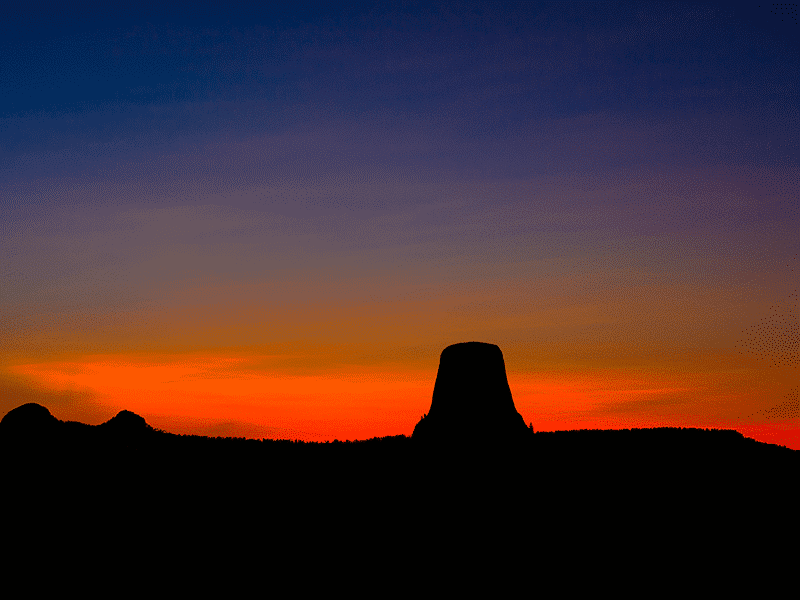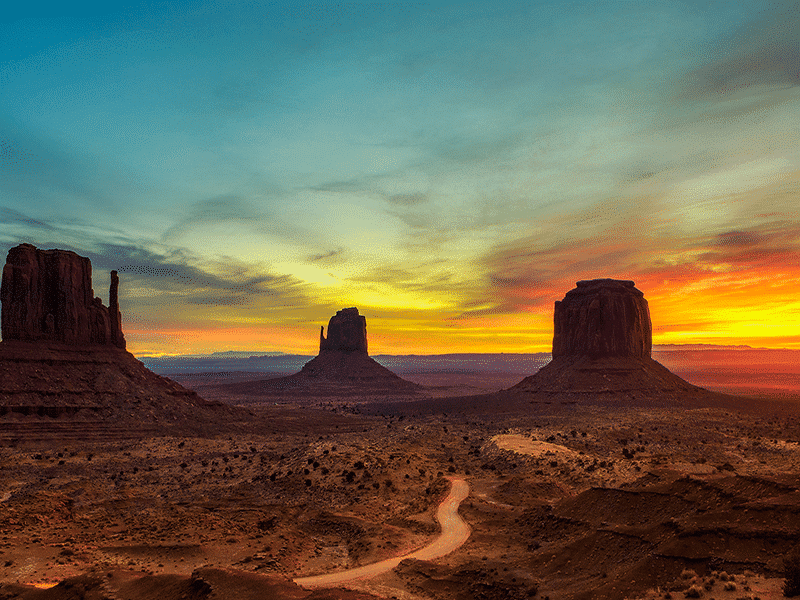Native tribes in the continental United States and Canada continue to grapple with issues of sovereignty that have arisen with renewed urgency as efforts proceed to jump-start a cannabis economy on Indian lands.
Last year, Congressman Don Young, an Alaska Republican, introduced the Tribal Marijuana Sovereignty Act. House Resolution 1416 was the first legislative attempt on Capitol Hill to address the Native American cannabis question.
As summarized by the Congressional Research Service, this bill would prohibit the federal government, when determining a Native American tribe’s eligibility for funds, benefits, or contracts, from considering the tribe’s authority to produce, purchase, or possess marijuana on tribal lands.
If such a bill was passed, a Native American tribe that grew hemp or THC-rich cannabis would not lose funding from the federal government or suffer other penalties pursuant to the Controlled Substances Act.

Left Behind in California
California led the way in normalization of cannabis with its successful ballot measure to legalize medical marijuana in 1996, and exactly 20 years later it voted to legalize an adult-use market. But the Golden State’s Native nations were completely overlooked in the text of 2016’s Proposition 64.
That failure to engage was unfortunately repeated in Prop 64’s enabling legislation, the Medicinal & Adult-Use Cannabis Regulatory Safety Act (MAUCRSA), which took effect at the start of 2018 — again, with no provision for Native Americans.
One tribe in San Diego County has staked its economic future to legal cannabis — and is standing up for its rights. The Iipay Nation of Santa Ysabel in the rural northeast of the county has opened a dispensary on the former site of a casino that closed in 2014. The Mountain Source Dispensary offers both bud and edibles, with an adjacent cultivation site operating as the Santa Ysabel Botanical Facility. The complex employs some 100, and a Santa Ysabel Tribal Cannabis Regulatory Agency has been established to oversee the new local industry.
Sacramento’s cannabis bureaucracy acknowledges that as sovereign nations, tribes can do whatever they want with cannabis on their reservations. “But they cannot operate in the licensed California market,” Alex Traverso, a representative of the California Bureau of Cannabis Control, told the San Diego Union-Tribune last year. That means no off-reservation sales, shipments or locations.
In the case of the Iipay Nation, the situation is further complicated by a 2017 San Diego County ordinance that bans cannabis cultivation in the unincorporated parts of the county. County authorities have equivocated on whether this applies to reservations. The newly formed California Native American Cannabis Association (C-NACA) includes five of San Diego County’s 18 federally recognized tribes: the Campo, Los Coyotes, Sycuan, and Manzanita as well as the Iipay of Santa Ysabel. All these are members of the Kumeyaay indigenous people of Southern California.
Cherokee Test the Limits of Sovereignty
The Cherokee Indian Cases that defined the limits of Native American sovereignty in US jurisprudence concerned conflicts with the state of Georgia. But today the principal branch of the Cherokee Nation is in Oklahoma — having been forcibly relocated there at the order of President Andrew Jackson in the 1838 Trail of Tears. This was, of course, in blatant violation of the sovereignty that the Supreme Court had recognized just years earlier.
Like many other Native tribes, the Cherokee are still negotiating questions of sovereignty today, questions that have a direct bearing on efforts jump-start a cannabis economy on Indian lands. In January 2020, Chief Chuck Hoskin Jr. appointed a Cherokee Nation workgroup to study issues related to hemp and cannabis in the areas of commerce, health care, and agriculture.
“As chief, I want well-informed policy, and the team we have assembled will be a great asset in that regard,” Hoskin told the Cherokee Phoenix. “I believe there are opportunities for Cherokee Nation, our businesses and our citizens to benefit from this emerging industry. But we need to move forward carefully and responsibly and in absolute strict adherence to the law in order to ensure success and sustainability.”
The “Executive Work Group on Hemp, Cannabis and Related Opportunities” is expected to make recommendations on Cherokee Nation policies, and whether a cultivation plan should be pursued for the reservation in the foothills of the Ozark Mountains.
With the legalization of medical marijuana in Oklahoma in June 2018, the Cherokee Nation found itself in an ambiguous predicament. The tribal government opted to honor the state law within its own jurisdiction — but under federal laws that officially supersede those of the state on the reservation, cannabis remained illegal in all its forms. As the Cherokee Phoenix reported, the tribal government decided to issue new regulations, allowing those with state medical marijuana licenses to seek and retain employment with the Cherokee Nation.
The following year an historic Supreme Court ruling recognized indigenous sovereignty over much of a current-day state of Oklahoma. The high court ruled 5-4 on July 9, 2019, that a large portion of eastern Oklahoma, including the city of Tulsa, remains Native American territory. The case was brought by a Native American man who had been convicted of sex crimes in Oklahoma state court. He argued that because he is a member of the Muscogee (Creek) Nation and the alleged crime took place on tribal land, he was not subject to the jurisdiction of the state courts. Instead, he claimed to be subject to the jurisdiction of the Creek Nation and federal authorities. In a decision written by conservative Trump-appointee Justice Neil Gorsuch, the Supreme Court agreed, citing an 1866 treaty, which the majority found had not been legally abrogated by Congress.
The implications of this decision are far greater than the specific issue of who has jurisdiction in a criminal case. If this ruling is found to apply to the Fort Laramie Treaty with the Sioux, for example, it could spell an end to longstanding corporate plans for mineral exploitation in South Dakota’s Black Hills.*
Canadian First Nations Embrace Cannabis
Cannabis has also become a key issue and a point of contention testing the limits of sovereignty for what are officially known as the First Nations in Canada. Since Canada legalized cannabis in 2018, this issue has joined long-standing struggles over oil, mineral, timber, and hydro-electric development on the traditional lands of First Nations.
Neither the new Cannabis Act nor the Indian Act, the principal law governing First Nations, address the question of cannabis in Canada’s Indigenous territories. Oversight is left to the provinces. But at least one First Nation has opened a cannabis outlet without provincial authorization, in a direct challenge to authorities.
This is the Muscowpetung First Nation on the prairie of Saskatchewan. Immediately after the Canadian Cannabis Act took effect in October 2018, they opened a cannabis retail outlet on their reserve — without provincial authorization. Officials have ever since been demanding its closure. So far, the Muscowpetung have prevailed.
The Muscowpetung passed their own Cannabis Act as the parliament in Ottawa passed the historic Canadian law. The retail outlet, dubbed Mino-Maskihki (“good medicine”), advertises recreational and medicinal cannabis products. It is still operating today, in defiance of provincial authorities.
And if accommodations are not reached with provincial and federal regulators, more may be set to follow.
A motion was passed at the 45th Annual All Ontario Chiefs Conference in Sault Ste. Marie, exerting control over all matters related to cannabis on First Nation lands. The Chiefs of Ontario subsequently issued a statement affirming that it is up to each First Nation to determine the status of cannabis in its territory, and to decide how it will be administered.
See other articles in the Hemp & Native American Sovereignty series.
Bill Weinberg, a Project CBD contributing writer, is a 30-year veteran journalist in the fields of drug policy, ecology and indigenous peoples. He is a former news editor at High Times magazine and produces the websites CounterVortex.org and Global Ganja Report. © Copyright, Project CBD. May not be reprinted without permission.
Footnote
The 1970s saw a “uranium rush” in the Black Hills, with Exxon and others acquiring new leases. In 1979, the US Court of Claims in Washington DC ruled the Lakota and other Sioux tribes were entitled to compensation for the Black Hills. The government appealed to the Supreme Court — which the following year found for the tribes in United States v. Sioux Nation of Indians. The decision resulted in a federal offer of $106 million. This was refused by the Sioux tribal governments. A 1987 tribal council resolution by the Oglala Sioux Tribe officially rejected monetary compensation for the Black Hills.
The Navajo have been far more impacted by mineral exploitation. The Peabody Coal Company’s Black Mesa strip mine opened in 1970. Local Navajo dubbed it the “Angel of Death.” For a generation, an annual five million tons of coal slurry ran through the Black Mesa Pipeline, 273 miles to Southern California Edison’s 1,500-megawatt Mohave Generating Station near Laughlin, NV. The mine and the generating station were both shut down in 2005 — leaving a toxic legacy along the pipeline route. In its 35 years of operation, the 103-square-mile Black Mesa mine was the source of an estimated 325 million tons of climate pollution discharged into the atmosphere. Peabody’s Kayenta Mine, also on the reservation, continued to supply approximately 7.5 million tons of low-sulfur thermal coal annually to the Navajo Generating Station near Page, Ariz. The power plant, run by Arizona’s Salt River Project utility, and Kayenta facility were both shut down in November 2019.
The Navajo Mine, now owned by the tribal government, continues even now to supply the Four Corners Power Plant near Farmington, NM. In July 2015, the US Environmental Protection Agency agreed to extend the lease on the Four Corners plant by 25 years, and allow an expansion of the mine. This came less than a month after operators of the plant (chiefly Arizona Public Service) agreed to settle a lawsuit by federal officials and environmental groups that claimed plant emissions violated the Clean Air Act. Under the settlement, operators agreed to spend up to $160 million on equipment to reduce harmful emissions, and to set aside millions more for health and environmental programs. But many locals were not appeased. “Our Mother Earth is being ruined,” Mary Lane, president of the Forgotten People, a grassroots Navajo organization, told reporters. “We don’t want the power plant to go on. It’s ruining all the environment, the air, the water.”
Ominously, October 2014 saw federal SWAT team raids — backed up with helicopters and drones — dispatched to enforce limits on sheep grazing by traditional Navajos in the Black Mesa area. Homes were reportedly invaded and families held at rifle-point. The Bureau of Indian Affairs (BIA) said that some 50 residents had exceeded their limit of 28 sheep per household, supposedly a measure against over-grazing. The operation was jointly carried out by BIA agents Hopi rangers—pointing to how the two neighboring tribes have been pitted against each other.
The Hopi Tribe has a reservation that lies within the larger Navajo reservation, and the raids took place in the so-called “Hopi Partitioned Lands” on Black Mesa, from which many Navajo families have been forcibly relocated over the past generation. This was formerly part of a “Joint Use Area” established to be shared among Hopi and Navajo under the 1882 treaty creating the Hopi reservation. The relocation was mandated by the 1974 Navajo and Hopi Settlement Act, passed by Congress to resolve a “Hopi-Navajo land dispute” that many on the two adjacent reservations saw as contrived by mineral interests.
The Hopi and Navajo tribal governments both cut deals with the oil and mining companies and vied with each other for the spoils. But in the 1970s, Peabody sought to expand into the Big Mountain area of Black Mesa, within the Joint Use Area. Big Mountain was a sacred site for the traditional Navajos living in the area. Peabody lobbyists sold Congress on a supposed Hopi-Navajo “range war” to push through legislation for forcibly removing the Navajo from one half of what had up to then been the Joint Use Area, and turning it over to the Hopi Tribe. So-called “New Lands” were set aside for the 10,000 relocated Navajo on the banks of the Rio Puerco, southeast of Black Mesa, near Sanders, Ariz. But these New Lands are contaminated by radioactive mine waste, from when a tailings containment dam burst at an upstream uranium mill in 1979. Just a few elderly Navajo remain on the land at Big Mountain.
Recommended Readings
Reviving Hemp in Menominee Country
Part 1 of a 5-part series on hemp and Native American sovereignty.
Growing a Cannabis Economy on White Earth
Part 2 of a 5-part series on hemp and Native American sovereignty.
Standing Up in Lakota Country
Part 3 of a 5-part series on hemp and Native American sovereignty.
Showdown at Navajo Nation
Part 4 of a 5-part series on hemp and Native American sovereignty.





